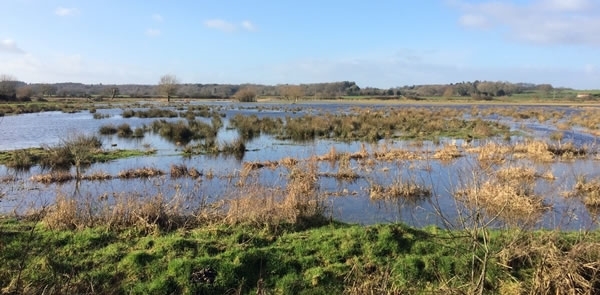
By Ellie Ness, GWCT Wetlands Placement Student
I had been looking forward to starting this placement for months before it started, but it’s going better than I could’ve hoped for. I’m spending a year in the GWCT’s Wetlands department as a placement year in my degree, working mainly on the Waders for Real project. Every day I get to do something different and interesting, and I have gained so much from it already.
One of the first tasks that I was given upon starting was a large box of samples of aquatic invertebrates, and I was told to identify them to species level (or to identify them as far as was realistically possible). They had all been collected in the summer from some of the ditches around our ‘hotspot’ sites for breeding lapwing.
No one at the Trust had any expertise or keys or books to help me, and I had very little previous knowledge of aquatic invertebrates, so I had to seek some help. The Trust’s Fisheries department had a contact who was very knowledgeable and happy to help me, so I spent a few days down with him in Dorset finding my feet, and they provided some very useful keys, and then I came back to the Trust to start on the bulk of the samples.
They took a while to do; I had 50 samples, with most samples having hundreds of invertebrates in them, with the most in one sample being 1422 individual invertebrates! Sometimes it was frustrating; I have never cursed beetles so much. But, it was very rewarding teaching myself how to identify them.
t was very satisfying spending ages trying to identify a damselfly nymph, struggling, keying it out as something I’ve never heard of, and then finding out that this species of damselfly is found in high numbers on the site in its adult form. Every sample had something different in it, it was really interesting to see the differences in species between the sites and between the river and ditch samples.
 Aquatic Beetle larvae (Hyphydrus ovatus)
Aquatic Beetle larvae (Hyphydrus ovatus)
 Water Scorpion (Nepa cinerea) in the ditch samples
Water Scorpion (Nepa cinerea) in the ditch samples
At the beginning it was a very daunting prospect being given this box with no clue where to start. But by the end I was very glad to have done them; I feel I have learned a lot from it about a topic I had no knowledge of beforehand, and it felt like a real achievement when I finished the last of the samples.
The last couple months have also been full on as we have been out doing wildfowl surveys every day that the weather permits. These are surveying the same water meadow sites in the Avon River Valley that the lapwing and redshank will be breeding on in a few months’ time.
They involve going out and recording the numbers of wintering wildfowl and wading birds that are using the sites. It’s been brilliant going out and getting more familiar with some of the wildfowl species, and it’s not too much of a hardship going out and watching birds in the winter sunshine.
We’ve seen a lot of lapwings out on our surveys; it’s been nice to see fairly good numbers of them wintering here, although they haven’t been the most cooperative birds when it comes to trying to see if any of them are our colour ringed birds from previous breeding seasons. They tend to always be too far away or in too long vegetation.
 Mute swans
Mute swans
There’s been quite good numbers of snipe in the valley as we’re having quite a wet winter so far; it’s been lovely to see wisps of 50+ flying up. There’s also been flocks of black tailed godwits, oystercatchers, and the occasional curlew, all using the river valley to feed. Hopefully this over winter flooding will lead to good habitat for the breeding waders in the spring giving them the best chance of success.
So far, my placement here is going brilliantly, and I recommend it highly to anyone thinking about doing a placement at the Trust. Now I am just looking forward to when the fieldwork season truly starts come spring, which isn’t too long away now.
Please support our vital wader conservation work